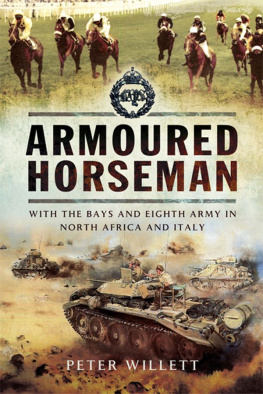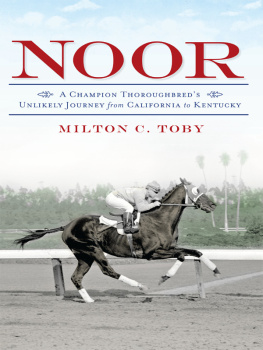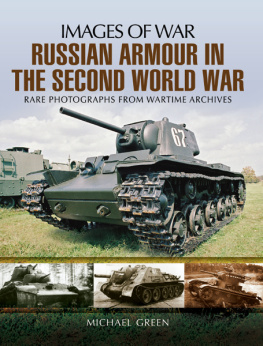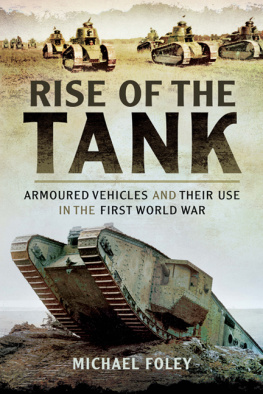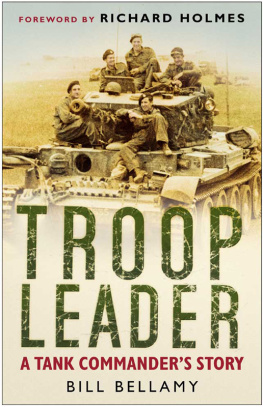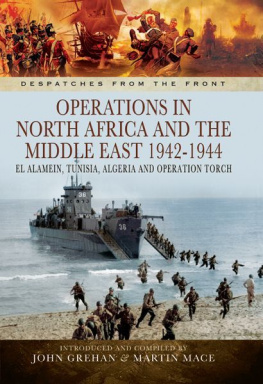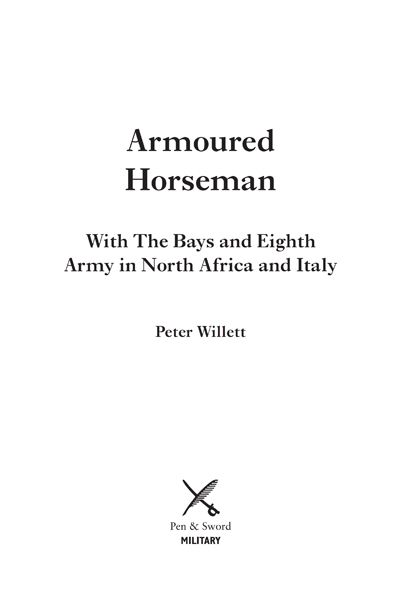Previously Published Books by Peter Willett:
An Introduction to the Thoroughbred (Stanley Paul, 1966)
Five Times Champion (Pelham Books, 1968)
The Thoroughbred (Weidenfeld & Nicolson, 1970)
The Classic Racehorse (Stanley Paul, 1981)
Makers of the Modern Thoroughbred (Century Hutchinson, 1986)
The Story of Tattersalls (Stanley Paul, 1987)
A History of the General Stud Book (Weatherbys, 1991)
Dick Hern (Hodder & Stoughton, 2000)
First published in Great Britain in 2015 by
Pen & Sword Military
an imprint of
Pen & Sword Books Ltd
47 Church Street
Barnsley
South Yorkshire
S70 2AS
Copyright Peter Willett 2015
ISBN 978 1 47383 421 7
eISBN 9781473857421
The right of Peter Willett to be identified as the Author of this Work has been asserted by him in accordance with the Copyright, Designs and Patents Act 1988.
A CIP catalogue record for this book is available from the British Library
All rights reserved. No part of this book may be reproduced or transmitted in any form or by any means, electronic or mechanical including photocopying, recording or by any information storage and retrieval system, without permission from the Publisher in writing.
Pen & Sword Books Ltd incorporates the imprints of Pen & Sword Archaeology, Atlas, Aviation, Battleground, Discovery, Family History, History, Maritime, Military, Naval, Politics, Railways, Select, Transport, True Crime, and Fiction, Frontline Books, Leo Cooper, Praetorian Press, Seaforth Publishing and Wharncliffe.
For a complete list of Pen & Sword titles please contact
PEN & SWORD BOOKS LIMITED
47 Church Street, Barnsley, South Yorkshire, S70 2AS, England
E-mail: enquiries@pen-and-sword.co.uk
Website: www.pen-and-sword.co.uk
Contents
List of Maps
Introduction
I served as an officer in The Queens Bays (2nd Dragoon Guards) from June 1941 until September 1946 not long enough to earn the veterans soubriquet of a bloody good old Bay but not bad for a temporary officer in a regular regiment.
The Bays, as they were commonly known for short, were one of the oldest cavalry regiments. They were formed by James II in 1685, but changed sides and fought in the army of William III at the Battle of the Boyne five years later when Jamess forces were defeated. They took part in many of the major campaigns of the next two centuries, but missed Waterloo, when they were stationed in Scotland. They fought as infantry on the Western Front at times during the Great War, distinguishing themselves particularly at the Second Battle of Ypres in 1915. They were back on their horses for most of the time between the two world wars, where they excelled at mounted sports and various military competitions. In 1931 they won the Inter-Regimental Polo Tournament at Hurlingham for the first time. The team consisted of George and Evelyn Fanshawe, Tom Draffen and Alex Barclay, all of whom afterwards commanded the regiment, the two last-named being my first two commanding officers. Mechanization began in 1935, but it was not until three years later that the regiment was able to turn out in full strength as an armoured regiment. Equipped with wretchedly inadequate cruiser and light tanks, the regiment fought rearguard actions in the later stages of the Dunkirk campaign before being evacuated from Brest in the middle of June. After several moves they arrived in Marlborough at the beginning of June 1941, and I joined them there two weeks later.
In the Second World War an armoured regiment such as The Queens Bays consisted for battle purposes of a regimental headquarters of four tanks, and three squadrons, each comprising a headquarters of four tanks and four troops of three tanks each. The regiment was commanded by a lieutenant colonel, each squadron by a major with a captain as second in command, and each troop by a lieutenant or second lieutenant. In addition there was a headquarters squadron comprising all the administrative and supply elements necessary to sustain a regiment in the field. In practice the regiment seldom entered a battle at full strength because the numbers were almost invariably reduced by preliminary actions, breakdowns and lost tracks. For example, B Squadron was launched into the notorious Point 153 attack in September 1944 with no more than four tanks.
Casualties in armoured regiments were light compared with the wholesale slaughter of the infantry in the trenches of the Western Front in the Great War. The battle of Montecieco, which included the attack on Point 153, was the Bays costliest day of the war, but the regiment suffered only sixty-four casualties (killed and wounded) altogether, including five officers and thirteen other ranks killed. The regiments casualties in the much longer battles of the Gazala Line and Second Alamein barely exceeded a hundred. Nevertheless, these casualty rates have to be seen in perspective. The tank crews of a squadron at full strength numbered no more than sixty-four, so a small number of casualties drastically reduced a squadrons fighting strength. Moreover, it was rare for the whole crew of a knocked-out tank to be casualties (killed or wounded), but the survivors were eliminated from the battle until a fresh tank could be provided for them. That might take hours or days.
The casualty list at Point 153 provided one remarkable, and tragic, example of the contrary fortunes of war. Captain John McVail had been the principal architect of the astonishing escape of five members of C Squadron from behind the German lines on the Coriano ridge two weeks earlier, but he was killed at Montecieco. In the meantime he had found time to write a 3,000-word account of the exploit, which was printed in Major General Beddingtons History of The Queens Bays , in spite of the fraught circumstances of taking over fresh tanks and the move forward over rough countryside and rutted dust-laden tracks. It was an astonishing achievement. A prcis of his account is included later in this book.
I count myself very lucky to have served so long in The Queens Bays. In the ranks of training regiments, and indeed Sandhurst, I had been alone, isolated and unprotected, with nobody to appeal to in case of trouble or injustice. But once established in a good regiment I was accepted as a member of a family and could count on advice and support whatever the circumstances and however blameworthy I might be. For my three commanding officers, Tom Draffen, Alex Barclay, and Daniel Asquith, who embodied that family feeling, I have nothing but affection and respect. In 1959 the regiment amalgamated with the Kings Dragoon Guards, and the joint regiment became The Queens Dragoon Guards (QDGs).
Authors Note
I n the chapter In the Ranks there is frequent incidence of the soldiers vernacular used for emphasis. I have renounced the mealy-mouthed evasions of blanks and asterisks because all they do is draw attention to the fact that the writer is straying into forbidden semantic territory. In any case the reader knows perfectly well what the blanks and asterisks stand for. In the soldiers vocabulary the F word has no crude or sexual connotation. It occurs as naturally as, say, damn in the mouths of educated speakers. So I see no valid reason at all for artificial restraint in recording the utterances of my comrades in the ranks.
Acknowledgements
A lthough this book is based on my personal recollections of events many decades ago, it could never have come to fulfilment without the generous help of many individuals in the recent past. I wish to record my deep gratitude to: Brigadier Henry Wilson, the Publishing Manager of Pen and Sword, without whose constant advice and encouragement the book would never have got off the ground; my editor Richard Doherty, a truly professional military historian, for correcting many crass errors and for his essential contribution to maps and illustrations; the late Mike Tomkin for a graphic account of the opening phase of the second battle of El Alamein; to Major General Robert Ward for the gift of a very special photograph; Brigadier George Powell for invaluable documents relating to the Battle of the Gazala Line; Lieutenant Colonel Basher Brace for great support from Home HQ 1st The Queens Dragoon Guards; the Regiment for permission to reproduce Joan Wanklyns painting of an incident at the Gazala Line; Lady Stanier for permission to quote from the privately published autobiography of Field Marshal Sir John Stanier; to Rupert Mackeson of Marlborough Sporting for his confident support; and Katharine Hipwell for her indispensable secretarial work.
Next page
